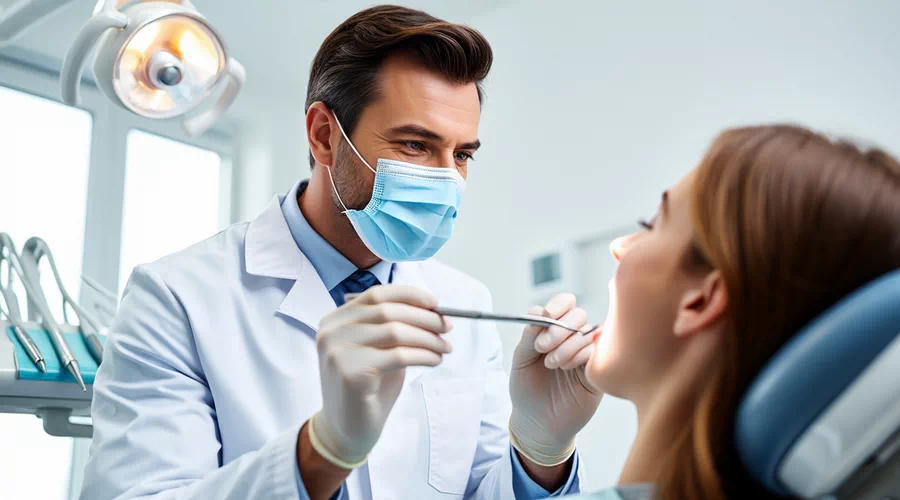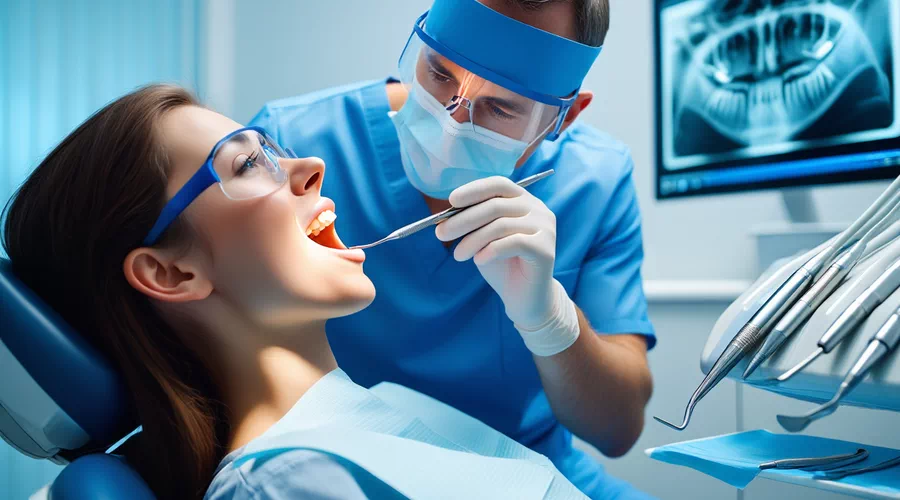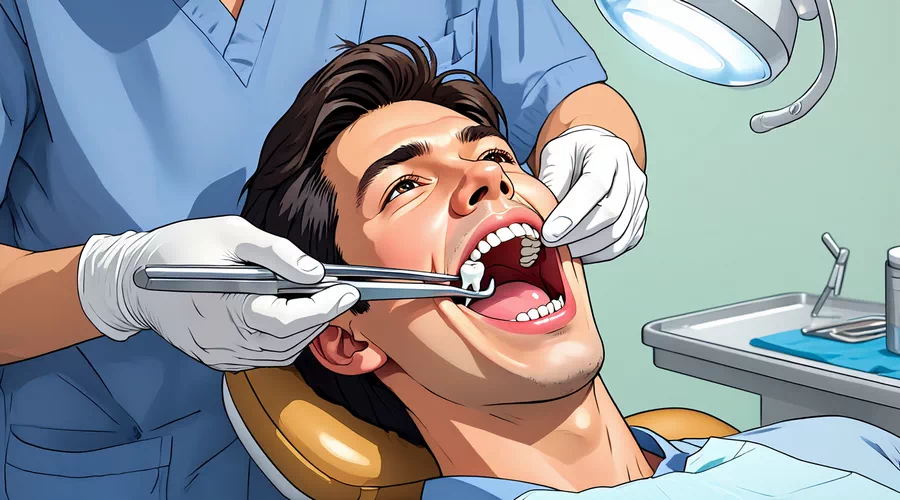In this article, you will learn what to expect during and after tooth extraction.
Fear of visiting a dentist is a natural phenomenon. Many people are afraid of the sounds of instruments, the sight of sharp objects and the uncertainty of upcoming manipulations. To overcome this fear, it is worth learning about the procedure and stages of treatment in advance.
Patients are especially afraid of tooth extraction. To dispel worries, it is recommended to get a detailed consultation with a dentist who will explain all the stages of the procedure, tell you about preparation and subsequent care. The doctor will also provide information on the cost of tooth extraction.
Extraction is resorted to in cases where the tooth is severely damaged, damaged or loose and cannot be restored. The essence of the procedure is to extract the tooth from its socket. If the dentist has come to the conclusion that extraction is necessary, he will explain to the patient in detail what to expect before, during and after the procedure.
Before the extraction, the doctor will definitely take an X-ray. This is necessary to determine the optimal method of tooth extraction. It is also important to inform the dentist about the presence of chronic diseases and medications taken in order to choose the right method of anesthesia. If you experience cold symptoms, runny nose, nausea or vomiting a week before your scheduled removal date, you should inform your doctor. It may be necessary to reschedule the procedure.
Preparing for tooth extraction

Before tooth extraction, you must consult with a doctor from Lorton Dentist and provide full information about the medications and dietary supplements you are taking. It is also important to inform about the presence of diseases that may increase the risk of developing infectious complications.
Such diseases include:
- Weakened immunity
- Congenital heart defects
- Liver disease (e.g. cirrhosis)
- Damaged or artificial heart valves
- Artificial joints (hip or knee replacements)
- Previous bacterial endocarditis
The choice of extraction method depends on the complexity of the clinical case. Simple extraction is performed when the tooth is clearly visible above the gum. The doctor loosens the tooth and carefully removes it from the socket. Surgical extraction is required when the tooth is under the gum. In this case, the doctor makes an incision in the gum to access the tooth.
Local anesthesia is always used when extracting a tooth. In some cases of surgical extraction, intravenous sedation may be used. The patient should not feel pain during the procedure. Any discomfort should be reported to the doctor immediately.
What happens after a tooth extraction?

After a tooth extraction, the doctor places a gauze pad on the socket and asks the patient to bite down firmly. This is necessary to form a blood clot and stop the bleeding. Self-dissolving sutures may be placed at the extraction site.
For successful healing, the following recommendations must be followed:
- Rest is recommended for the first 24 hours after extraction.
- Keep the gauze pad on the extraction site for at least three hours, changing it as needed.
- Apply a cold compress to the cheek for 10 minutes.
- Place a high pillow under your head while sleeping.
- Do not spit, rinse your mouth, or drink through a straw for the first 24 hours after extraction.
- After 24 hours, gently rinse your mouth with warm saline solution (1/2 teaspoon of salt per glass of warm water).
- Eat soft foods during the healing period.
- Do not brush or floss in the area of the extracted tooth.
- Follow your doctor’s instructions strictly when taking painkillers.
Some pain, swelling, and bleeding after the extraction are normal. However, if you experience any of the following symptoms, you should see a doctor as soon as possible:
- Severe swelling, redness, or excessive drainage from the socket
- Severe pain or bleeding
- Chills, fever, or other signs of infection
- Cough, shortness of breath, or chest pain
- Nausea or vomiting
If you experience symptoms such as severe pain, uncontrollable bleeding, severe swelling, chills, fever, or difficulty swallowing, seek immediate medical attention.
It is recommended to eat soft and cool foods for a few days after the extraction. You can return to your normal diet once the socket has healed. You should avoid drinking through a straw, spitting, and smoking, as this may dislodge the blood clot.
Complete healing takes one to two weeks. After that, you can return to your normal dental care.
Wisdom Teeth Extraction Considerations
Wisdom teeth, or third molars, usually erupt between the ages of 17 and 25. They are often removed for preventive purposes, but the need for this remains a matter of debate. The decision to remove wisdom teeth should be made with a dentist, after weighing all the benefits, risks, and possible impact on quality of life.
For many people, wisdom teeth do not cause any problems. For some, they do not even erupt. However, in some cases, wisdom teeth remain impacted (not erupted) or erupt incorrectly. In these situations, removal may be necessary.
The American Dental Association (ADA) recommends removing wisdom teeth in the following cases:
- Pain or discomfort
- Tumors or cysts
- Gum disease
- Infections
- Damage to adjacent teeth
- Tooth decay
To make a decision about wisdom teeth removal, it is necessary to consult with a dentist and get an independent opinion from another specialist.
Want to schedule an appointment?
Mo-Fr 8:00 am – 5:00 pm
Sa 9:30 am – 3:00 pm

